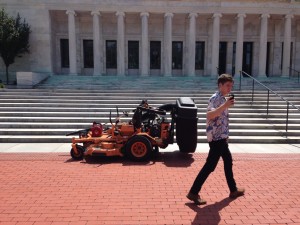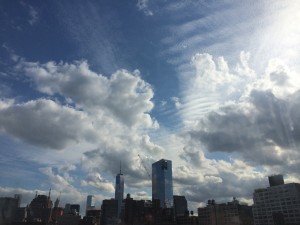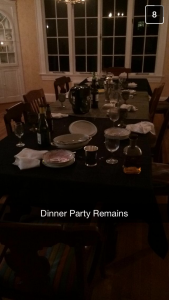Since my last post, I have made a great deal of progress on a number of my projects. I spent the first two months of the summer reading intensively and now I have entered the writing phase of my work.
One of my objectives was to create didactic material for the museum that would help to foster a ‘visual literacy’ for visitors of all educational backgrounds. After studying a number of somewhat related precedents at other museums and surveying a variety of introductory art history texts, I have been able to produce a document that is currently under review by a former museum director. By focusing on different frameworks for approaching art- namely form, content, and context- the hope is that visitors will not only enrich their engagement with work in the museum but develop an attentive and critical disposition towards aesthetics more broadly, in our image-saturated culture.
The other portion of labor has been dedicated to researching and writing a couple of articles that similarly critique certain developments in visual culture, especially in its relationship to politics. I have completed one of the pieces and have been been in touch with editors from a few publications. My aim is to finish two other articles come September, so that I can begin shopping them around when school begins.
This is a picture of me taking a picture on my phone in front of the Toledo Museum of Art. I include it here because I have been writing a great deal about museums and camera phones specifically. Also, there is something jarring about the robust mechanical presence of the lawn mower and the refined neoclassical elegance of the museum.
This is sun-bleached picture of the view near the desk where I have been reading and writing most days. Countless hours have gone by looking downtown.
This is a screenshot of a Snapchat. I have been writing a lot about Snapchat and I have become quite fond of the screenshot. I particularly like this image because there is something so fleeting about the mess remaining after a dinner party and, for me, the 8-second countdown suggests that it will be cleaned shortly. Immortalizing “remains” in this way, through a screenshot, is the best kind of resistance I believe when using Snapchat- an app whose benefits I am deeply suspicious off.




I just realized that this post is written by you Zach. Well, I would like to add that one of the museums I visited here had a recording booth where the visitors could film and record there voice. They were supposed to go in and say what they thought about the museum. And then they were all saved and played and you could watch them. I think this was what the films were about. The question could have been slightly different. But the museum, Museo Pinacoteca do Sao Paulo, had a whole room (like the New Museum in NYC) dedicated to thinking about what a museum is. In this room they also had a space where you could curate your own exhibition. There was wall space and shelves were the visitors could rearrange objects and images. I had a lot of fun placing the pieces in different constellations. When I left the museum, it felt like I left something of my own and thereby changed the museum… future viewers would not step into the same museum I stepped into. Somehow, the museum became mine with this activity.
Hi,
This is a very interesting post to me as I have been spending the past few weeks focusing on the text in art spaces and museums as well. The focus of my research is contemporary digital poetry in Brazil. My interest would interest you because Brazil is one of the few countries in the world were text and art have a long relationship. It started in the 50s with the concrete poetry movement here. Text became something visual and the poetry was exhibited in art spaces. The concrete poets used sound, color and shape with words. I have never seen as many visual exhibitions of poetry as I have here in Sao Paulo and Rio and Parati, three cities in Brazil. I think studying text as something visual would be important to your study. Because if you are looking at art on the walls during your visit, then looking/reading text must be influenced by the immensely visual observation activity that dominates most museums. What happens when text is observed as image? Also, the digital element to the thoughts in this post! How is the digital transforming how we read and write? With camera phones we are more and more receiving and producing text as image. This is what memes are — images with/of text. A museum is a place where text moves away from the page. A phone is a place where text is no longer on a page but on a screen. I definitely think a lot is happening to what text is with the increase of digital culture. For digital poets or multimedia poets, it is important to think about how we make and consume text today. Typing is different from handwriting. The medium… the message. Typing this now, the text is one thing to me. It would be a different text if it was not appearing on the screen with clicks on a keyboard and instead with strokes with a certain pain on a plane of paper. Your snapchat paragraph… makes me think of the difference between objects of a museum and the objects of a snapchat image. The objects of a museum are fixed. When you come they are there. When you leave they are still there. The sharing of objects through Snapchat are in flux… they are only in flux. They are not fixed to a certain place of time. Instead the objects become the sharing of time and space… always already existing in relationship to another space and time.. the receiver of the photo. The same thing is happening to text more and more. Most of the writing we do is with a receiver in mind. The daily texting is always in the frame of a TO and a FROM. Often the TO is not known… or rather, it is multiple… as well.